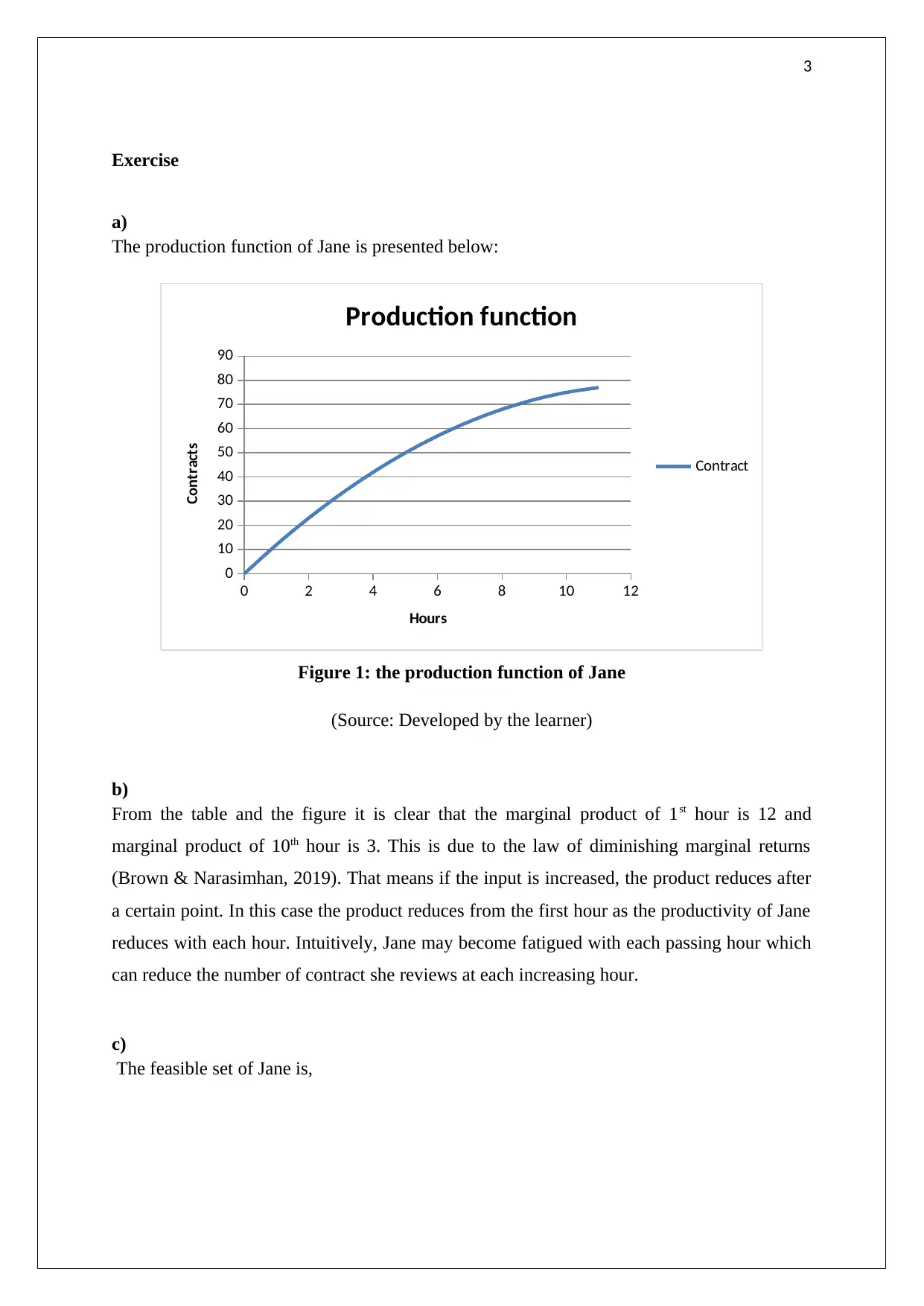ECON7200 Economic Principles: Production, Leisure, and Utility
VerifiedAdded on 2023/04/23
|8
|888
|281
Homework Assignment
AI Summary
This assignment delves into the economic principles surrounding a woman named Jane and her small business providing legal services. It begins by examining her production function, illustrating the relationship between hours worked and contracts reviewed. The analysis explores the concept of diminishing marginal returns, explaining why Jane's productivity decreases with each additional hour of work. Furthermore, the assignment constructs Jane's feasible set, depicting the possible combinations of income and free time she can achieve daily, considering her need for sleep and daily tasks. It investigates whether specific choices, such as having 4 hours of free time, are feasible given her income goals. The assignment also analyzes the opportunity cost of increasing free time and illustrates the optimal choice of work and free time using indifference curves. It further explains the concepts of marginal rate of substitution (MRS) and marginal rate of transformation (MRT) and their role in reaching the highest achievable utility curve, concluding that the optimal choice occurs where MRS equals MRT.
1 out of 8











![[object Object]](/_next/static/media/star-bottom.7253800d.svg)